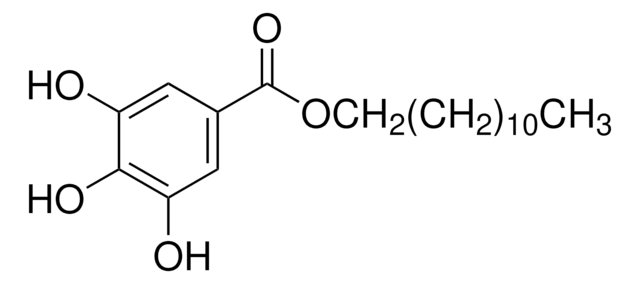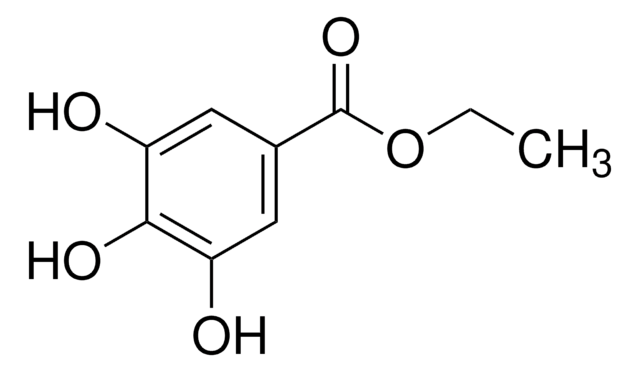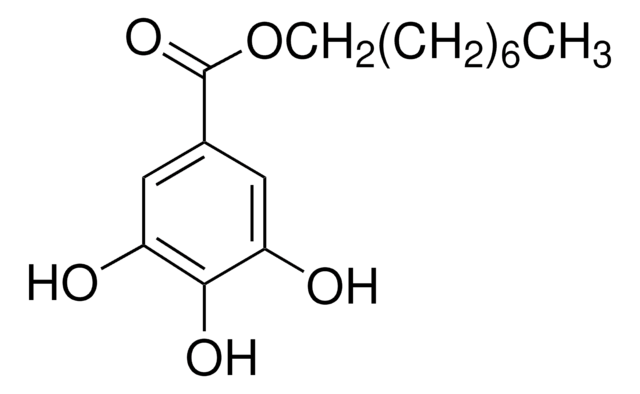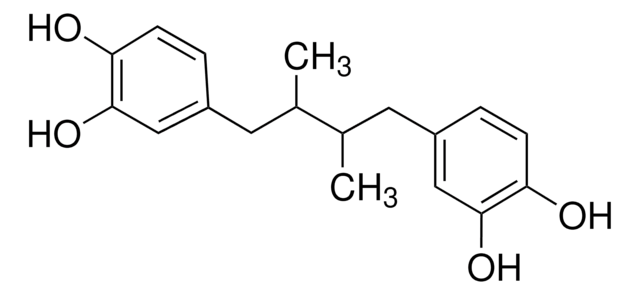Key Documents
48700
Octyl gallate
antioxidant, ≥99.0% (HPLC)
Synonim(y):
Octyl 3,4,5-trihydroxybenzoate, n-Octyl gallate
About This Item
Polecane produkty
Poziom jakości
Próba
≥99.0% (HPLC)
mp
101-103 °C
101-104 °C (lit.)
rozpuszczalność
soluble 2.5%, clear, colorless (AcOH (MEOH))
ciąg SMILES
CCCCCCCCOC(=O)c1cc(O)c(O)c(O)c1
InChI
1S/C15H22O5/c1-2-3-4-5-6-7-8-20-15(19)11-9-12(16)14(18)13(17)10-11/h9-10,16-18H,2-8H2,1H3
Klucz InChI
NRPKURNSADTHLJ-UHFFFAOYSA-N
Szukasz podobnych produktów? Odwiedź Przewodnik dotyczący porównywania produktów
Powiązane kategorie
Opis ogólny
Zastosowanie
Oświadczenie o zrzeczeniu się odpowiedzialności
Hasło ostrzegawcze
Warning
Zwroty wskazujące rodzaj zagrożenia
Zwroty wskazujące środki ostrożności
Klasyfikacja zagrożeń
Acute Tox. 4 Oral - Skin Sens. 1
Kod klasy składowania
11 - Combustible Solids
Klasa zagrożenia wodnego (WGK)
WGK 1
Temperatura zapłonu (°F)
Not applicable
Temperatura zapłonu (°C)
Not applicable
Środki ochrony indywidualnej
dust mask type N95 (US), Eyeshields, Faceshields, Gloves
Wybierz jedną z najnowszych wersji:
Masz już ten produkt?
Dokumenty związane z niedawno zakupionymi produktami zostały zamieszczone w Bibliotece dokumentów.
Klienci oglądali również te produkty
Nasz zespół naukowców ma doświadczenie we wszystkich obszarach badań, w tym w naukach przyrodniczych, materiałoznawstwie, syntezie chemicznej, chromatografii, analityce i wielu innych dziedzinach.
Skontaktuj się z zespołem ds. pomocy technicznej







